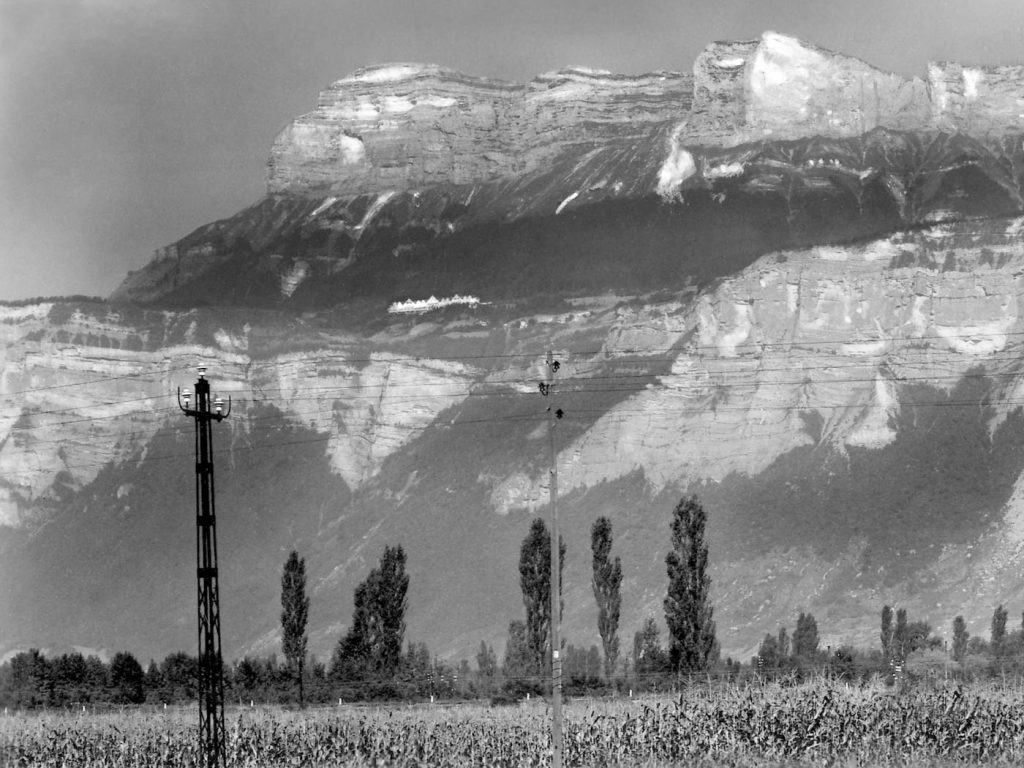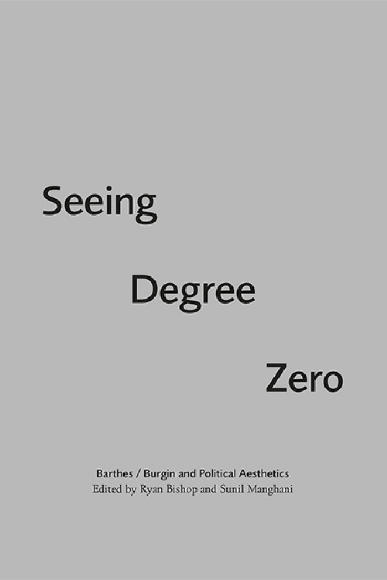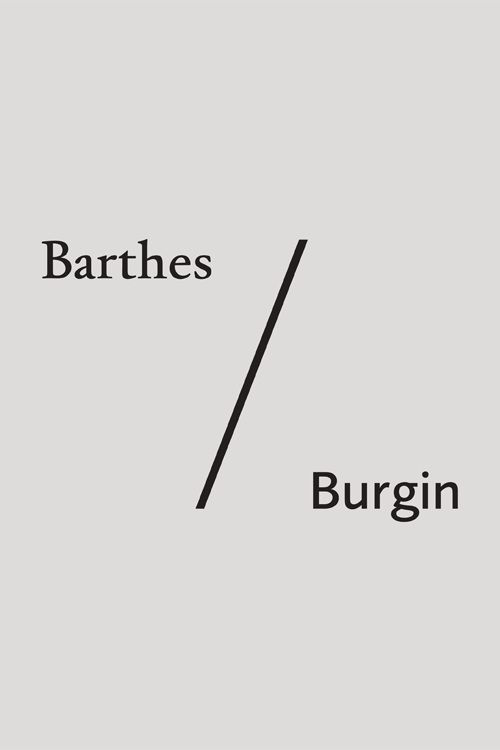
Enjoy a sneak peek of the Introduction to Seeing Degree Zero: Barthes/Burgin and Political Aesthetics edited by Ryan Bishop and Sunil Manghani
An unfolding line of enquiry has been the revisiting of Barthes’ term ‘zero degree’, which dates back to the very beginning of his career, but which arguably feeds across all of his writing, and is certainly again invoked, if refigured, at the end of his life in The Neutral (2005). The exhibition was an attempt to bring Burgin’s signature aesthetic of un/real physical and psychical spaces together with Barthes’ interest in the Neutral and zero degree. In showing Barthes’ drawings (borne of a sustained practice over a decade), the exhibition emphasised aesthetic practices of thinking as well as prompting an examination of key theoretical concerns. It is worth noting, in the late lecture courses, Barthes is more explicit about his reading of philosophical sources, notably pre-Socratic thought, scepticism and East Asian philosophies. Thus, in addition to the obvious connections between Barthes and Burgin regarding structuralism and psychoanalysis, Barthes’ later writings also helped draw out further underlying philosophical concerns over aesthetics/ethics and the image.

Crucially, for this volume, and while not always explicitly referenced, we argue the critical concept of ‘zero degree’ presents a common, underlying interest threaded through the work of both Roland Barthes and Victor Burgin. With respect to literature and the visual arts, it specifies a ‘neutral’ aesthetic situated in response to and outside of the dominant cultural order. As such, we take ‘zero degree’ to offer a key device to re-examine critical debates around the political aesthetic, and even an ethics of aesthetics, and so raise questions about the ‘response-abilities’ of not only the artist but also the audience. There is a way in which we borrow this reference to ‘response-ability’ second-hand, for it is Burgin (2008: 42) who reminds us of John Cage’s rewriting of responsibilities as ‘response-abilities’ in which ‘the ethics of accountability’ are replaced by ‘an aesthetics of attention’. The political aesthetics we wish to ascribe to this term extends to not only the work or its specific context but to the capacity of response as constrained by medium and site of engagement: the frames of seeing. There has been some debate in putting this book together as to whether our topic is one of ‘seeing’ or the ‘image’. We would argue for both. Part II is titled ‘Image Degree Zero’ and attends to the phenomena of Image (which we deliberately write with a capital ‘I’). Our concern here is the deep-level complexity or problematic that underlines all debates held with respect to visual culture, the visual arts and forms of ‘thinking’ that we might characterise as imagistic (as opposed to linguistic). In ‘Painting, Photography, Projection’, a lengthy contribution to that section, we offer seven propositions of Image. In its form, the essay is based upon Roland Barthes’ widely discussed article ‘From Work to Text’, in which he argues for the concept of the Text. At its close, Barthes puts forward the notion of a ‘social space’ in which all writing must be understood (and whereby research into writing then becomes necessarily the practice of writing itself). Barthes’ contribution is an eloquent example of (and contribution to) what has been termed ‘the linguistic turn’, whereby – in the course of the twentieth century – all of social and cultural life came to be critically examined in terms of ‘texts’ and ‘textuality’. Our own interest here in Image can be said to respond to what W. J. T. Mitchell (1994: 16) has characterised more recently as the ‘pictorial turn’, marked by a ‘postlinguistic, postsemiotic rediscovery of the picture’.
However, while ‘image’ remains a deep-level quandary (the ‘quark’ to the ‘spacetime’ of humanities-based research), we equally wish to evoke the term ‘seeing’, as found in the title of this book. We have sought to echo something of Barthes’ well-known title Writing Degree Zero, precisely to hold to the sense of the active dimensions of writing. Based on common use, there are various difficulties in using the word ‘imaging’ rather than ‘seeing’. Imaging tends to bring to mind specific imaging technologies (notably optical devices and processes), rather than suggest of a more overarching notion of ‘forming image’. Some of this difficulty is raised directly in ‘Painting, Photography, Projection’, but equally, the final ‘proposition’ presented in the text brings us back to questions of our response to artworks, and so our response-abilities. If we configure
the ‘zero degree’ as some kind of anterior image or visual experience, we still eventually must accept an ability to spectate, even if at that point (as with colourless writing) we likely have to accept the failure or the subsuming of Image into a more coded, empirically normative regime. For Barthes, ‘writing’ is both the means of and potential escape from Literature (or at least ‘writing’ is what allows Literature to re-invent itself). We cannot rid ourselves of the constraints of language or style, he argues, but our practice of writing is where we can enable ‘differences’, and even, if fleetingly, impossibilities such as zero degree writing. Similarly, we take the practice of ‘seeing’ as to uphold new potential differences within visual regimes. Of course, much of what has been written about the ‘gaze’ has been about territorialising regimes of seeing, but what if we equate such regimes more as ‘object’, much as we do with Literature, so leaving ‘seeing’ itself open as a means of ‘writing’? In other words, what if seeing harbours a neutral component, out of which we can make new contributions, new
configurations? This is the ‘political aesthetic’ that underlines much of what is considered in this book. So, while we can consider how we (at)tend to, are in attendance with, and give attention to visual objects and conditions (all of which can be placed within the ‘economy’ of Image), we need equally remind ourselves of how we come to see, or to write the image.
About the editors
Ryan Bishop is Professor of Global Arts and Politics and Co-director of the research group Archaeologies of Media and Technology at the Winchester School of Art, University of Southampton, United Kingdom. He co-edits the journal Cultural Politics (Duke UP), and is a series editor for Technicities (Edinburgh University Press) and Cultural Politics (Duke UP).
Sunil Manghani is Professor of Theory, Practice and Critique at Winchester School of Art, University of Southampton.
About the book
Examines the critical concept ‘zero degree’ through the work of Roland Barthes and Victor Burgin
In the fields of literature and the visual arts, ‘zero degree’ represents a neutral aesthetic situated in response to, and outside of, the dominant cultural order. Taking Roland Barthes’ 1953 book Writing Degree Zero as just one starting point, this volume examines the historical, theoretical and visual impact of the term and draws directly upon the editors’ ongoing collaboration with artist and writer Victor Burgin.
The book is composed of key chapters by the editors and Burgin, a series of collaborative texts with Burgin and four commissioned essays concerned with the relationship between Barthes and Burgin in the context of the spectatorship of art. It includes an in-depth dialogue regarding Burgin’s long-term reading of Barthes and a lengthy image-text, offering critical exploration of the Image (in echo of earlier theories of the Text). Also included are translations of two projections works by Burgin, Belledonne and Prairie, which work alongside and inform the collected essays. Overall, the book provides a combined reading of both Barthes and Burgin, which in turn leads to new considerations of visual culture, the spectatorship of art and the political aesthetic.
The paperback version of ‘Seeing Degree Zero: Barthes/Burgin and Political Aesthetics’ is coming soon!
Preorder your copy here.
You may also like: Barthes/Burgin Edited by Ryan Bishop, Sunil Manghani
A new critical consideration of the writings and works of Roland Barthes and Victor Burgin
The influence of Roland Barthes on Burgin’s work is well documented. Equally, Burgin’s prominence as an artist and theorist concerned with text and image offers a productive dialogue with Barthes’ work. Victor Burgin has long been considered both theorist and practitioner, while Barthes is more known as a theorist and writer. In bringing to the fore Barthes’s practice of painting and drawing, Barthes/Burgin prompts a new critical consideration of Barthes/Burgin, theory/practice, writing/making and criticality/visuality.
Barthes/Burgin features two new interviews with Burgin, one concerned with his turn to new digital practices and the other a reflection on his reading of Roland Barthes. Also included are images and texts from the artists and an essay critically examining Barthes’ exercises in drawing and painting.
This book accompanied an exhibition at the John Hansard Gallery (February to April 2016), bringing together recent projection works by Victor Burgin and a selection of drawings by Roland Barthes rarely seen outside of France. The exhibition played with Barthes’ use of the slash as established in semiology (and notably used in the title of Barthes’ key poststructuralist work S/Z).







